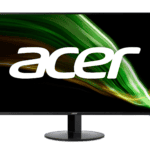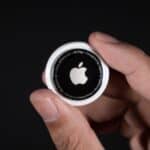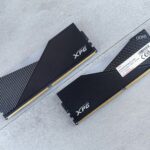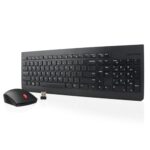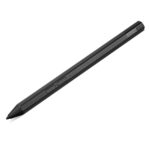Repairing a PlayStation 3 can be a rewarding project for those who enjoy tackling technical challenges themselves. While professional repair services are an option, many gamers choose to conduct DIY repairs to address various issues with their PS3 consoles. These issues can range from software glitches to hardware problems like the Yellow Light of Death (YLOD). The PlayStation 3 has provided countless hours of entertainment to gamers worldwide.
However, like any electronic device, it can experience issues over time. While some problems may necessitate professional repair, many common PS3 issues can be tackled with some basic DIY troubleshooting. This guide will walk you through some quick fixes for frequent problems, empowering you to potentially revive your console and continue your gaming adventures. Before attempting any repair, it’s important to be well-prepared. This involves gathering the necessary tools, such as screwdrivers, thermal paste, and creating a safe workspace.
Step-by-step guides and service manuals available online are invaluable resources. They offer detailed instructions that can guide even a beginner through the process of disassembling, troubleshooting, and fixing their console. Safety precautions are paramount; ensuring the console is unplugged and avoiding static discharge are critical steps in avoiding further damage.

Tackling PS3 Troubles at Home
The PlayStation 3, while a beloved console, isn’t immune to wear and tear. Some issues can arise over time, but many can be fixed with simple DIY solutions. Here’s a guide to address common problems and get your PS3 back in action.
Common PS3 Issues and DIY Fixes
| Problem | Possible Cause | DIY Fix |
|---|---|---|
| PS3 won’t turn on. | Power supply issue, faulty power cord, or internal hardware failure. | Check power cord and outlet. Try a different power cord. If comfortable, open the PS3 and check internal connections/power supply. |
| Yellow Light of Death (YLOD). | Overheating due to dust buildup or failing thermal paste. | Clean dust from vents and internal components. Reapply thermal paste to the CPU and GPU (requires technical skills). |
| Red flashing light. | Overheating, usually less severe than YLOD. | Turn off the PS3 and let it cool down completely. Ensure proper ventilation around the console. Clean dust from vents. |
| Disc read errors. | Dirty or scratched disc, or a failing Blu-ray drive. | Clean the disc with a microfiber cloth. Try a different disc. If the problem persists, the Blu-ray drive may need replacement. |
| Freezing or lagging during gameplay. | Overheating, corrupted game data, or hard drive issues. | Clean dust from vents and ensure proper ventilation. Delete and reinstall the game. If the issue persists, consider replacing the hard drive. |
Important Notes
- Safety First: Always unplug your PS3 before opening it. Be careful when handling internal components.
- Warranty: Opening your PS3 may void your warranty. Proceed with caution.
- Technical Skills: Some fixes require technical knowledge and experience. If unsure, seek professional help.
- Data Backup: Back up your data before attempting any repairs, especially those involving the hard drive.

Key Takeaways
- PlayStation 3 repair can be done at home to solve various issues, saving money and offering learning opportunities.
- Preparation is key and requires the right tools, a safe work environment, and the use of detailed instructional resources.
- DIY repair steps include careful disassembly, problem identification, and reassembly, prioritizing safety to prevent damage.
Preparing for PlayStation 3 Repair
Before attempting any repair on your PlayStation 3, understanding the specific model, gathering the necessary tools and parts, being aware of safety and warranty implications, and identifying the issues are crucial steps.
Understanding PlayStation 3 Models
Sony’s PlayStation 3 has seen multiple versions since its release, each with its own set of features and components. The original “fat” PS3, the slimmer redesign, and the latest “super slim” have different internal designs which affect the type of repair methods to be used. Users should identify their PS3 model number—found on the bottom of the console—to accurately follow model-specific repair guides.
Tools and Parts Required
Here is a list of tools and replacement parts commonly used for repairing a PlayStation 3:
Tools:
- Phillips #1 screwdriver
- Precision tweezers
- Spudger
- Antistatic wrist strap
Parts:
- Replacement hard drive
- Blu-ray drive
- Thermal paste
- Power supply unit
Obtain high-quality tools to avoid damaging your PS3. Parts should be compatible with your model.
Safety Measures and Warranty Considerations
When conducting repairs, safety comes first. Working in a static-free area is essential to protect the PS3’s electronic components. The use of an antistatic mat and wrist strap is advised. Opening the console will void the Sony warranty; a warranty sticker is designed to show if the device has been tampered with. Users should check their warranty status before proceeding.
Troubleshooting Common Issues
Some issues are more prevalent in PS3 consoles. The “Yellow Light of Death” indicates a general hardware failure often related to overheating. Overheating can be mitigated by replacing the thermal paste and ensuring the console’s ventilation is not obstructed. Disc read problems might necessitate cleaning or replacement of the Blu-ray drive. For power issues, inspecting cables and the power supply is a good starting point. Develop an understanding of the common issues of the PlayStation 3 to effectively troubleshoot and address the specific problems at hand.
Step-by-Step Repair Processes
Repairing a PlayStation 3 can be a fulfilling project. It’s crucial to have the right tools and guides before you start any repair work.
Repairing the Blu-Ray Player
The Blu-Ray player is a common point of failure. If your PS3 is having trouble reading discs, start by cleaning the laser lens carefully with a soft, microfiber cloth. If this doesn’t help, you may need to replace the entire Blu-Ray drive.
Fixing Overheating Problems
Overheating can cause serious damage to your console’s internal components. Regularly cleaning out dust build-up in the vents with compressed air will help prevent this. If your PS3 is already overheating, consider replacing the thermal paste between the heat sinks and the CPU/GPU, as it can dry out and become less effective over time.
Hard Drive Upgrade and Replacement
Upgrading the hard drive can improve performance and storage capacity. Follow these steps to replace or upgrade:
- Back up your data.
- Unscrew and remove the old hard drive from its bay.
- Insert the new hard drive and secure it with screws.
- Follow on-screen prompts to format the new drive when your PS3 starts up.
Resolving the Yellow Light of Death
The Yellow Light of Death (YLOD) indicates a hardware failure, often due to solder cracking under the CPU or GPU. Fixing this problem can be complex and may require a heat gun to reflow the solder. It is a delicate job best left to professionals or experienced DIYers.
Cable and Connection Issues
Faulty or loose cables can cause various problems with your PS3. Check and secure all connections. HDMI problems can often be resolved by unplugging and firmly reconnecting the cable or replacing it if it’s damaged.
Guidance on Modding and Enhancements
Modding your PS3 can add new features or enhance its performance, but it’s not without its risks. Always follow electronic repair guides closely to avoid damaging your device. Remember that modding may void your warranty or breach the terms of service.
Frequently Asked Questions
When your PlayStation 3 has issues, you’re faced with a choice: seek professional help or attempt a fix yourself. Below are common questions that arise during PlayStation 3 maintenance.
What steps are involved in repairing a YLOD (Yellow Light of Death) on a PS3?
To repair a YLOD, one should first turn off the console and unplug all cables. Disassembling the unit is needed to access the motherboard, which is typically reflowed or reballed to fix soldering faults. It’s a delicate process that requires precision and correct tools to avoid further damage.
How can I resolve issues with a PS3 Slim not reading discs?
If a PS3 Slim isn’t reading discs, cleaning the laser lens gently with a microfiber cloth might do the trick. More stubborn cases could need the lens to be replaced. When disassembling the console to reach the lens, keep track of screws and be careful of delicate connectors.
What are common solutions for a PS3 controller that won’t connect or charge?
First, reset the controller using the tiny button on the back, near the L2 button. If that doesn’t help, check the USB cable and the mini-USB port on the controller for any damage. Sometimes, replacing the internal battery is necessary if it won’t hold a charge.
What tools and techniques are necessary for replacing a PS3 hard drive?
Replacing the PS3 hard drive involves a simple Phillips head screwdriver to remove the hard drive bay cover and to replace the actual HDD. It’s critical to use the right drive format and to back up any data before the swap to avoid loss.
How do I troubleshoot and fix audio or video problems on my PS3?
Make sure all cables are properly connected and check for any damage. Sometimes you have to reset the display settings by holding the power button down until you hear two beeps. This forces the PS3 to recognize the connected display outputs.
How can I address overheating issues with my PS3 console?
Overheating can be countered by ensuring there’s enough clearance around the console for air flow. If overheating persists, internal dust buildup might be the issue. Cleaning the inside, including the fan and heat sink, can improve the situation. If the problem continues, thermal paste between the heat sinks and processors may need reapplication.


